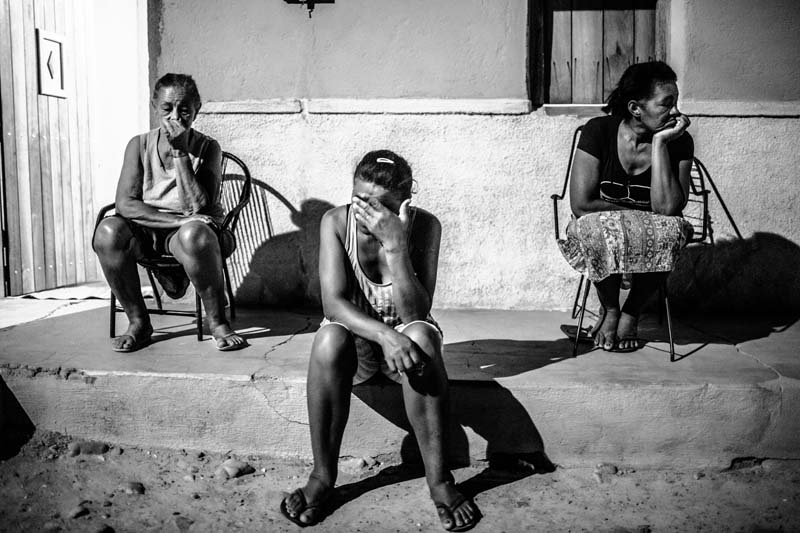|
|

|
|

|
First Place
Daniel Berehulak
Getty Images Reportage for The New York Times
1
2
3
4
5
6
7
8
9
10
11
12
13
14
15
16
17
18
19
20
21
22
23
24
25
26
27
28
29
30
31
32
33
34
35
36
37
38
39
40
41
42
43
44
45
46
47
48
49
50
PAULISTANA, BRAZIL - JANUARY 31, 2014: (C) Auzenir Maria di Nascimento Pereira, sits with her mother (L) Maria de Jesus Nascimento, 76 and another family member, outside of a family home, as they discuss the affects of the abandoned Transnordestina railway project on their lives and village on January 31, 2014 in the village of Quilombo Contente near Paulistana, Piaui province, in Northern Eastern Brazil. Auzenir Maria di Nascimento Pereira was forced to destroy her own home after she was relocated onto her mothers land, and losing the property to the project. The project has dislocated the village of Quilombo Contente through the acquisition of land, in many cases without any payment, splitting their community geographically and affected access to water, a lifeline for the village. The Transnordestina, a 1,400-mile railroad project which a steel company began building in 2006 in northeast Brazil, offers a view into the pitfalls plaguing projects big and small across Brazil. Intended to be finished in 2010 at a cost of about $1.8 billion, the railroad is now expected to cost at least $3.2 billion, with ample financing from state banks, and be completed sometime around 2016. Long stretches along the routes where freight trains were already supposed to be running now stand completely deserted. Wiry vaqueiros, or cowboys, herd cattle in the shadow of futuristic railroad bridges with massive concrete pillars towering 150 feet above parched valleys.
|
|
|



